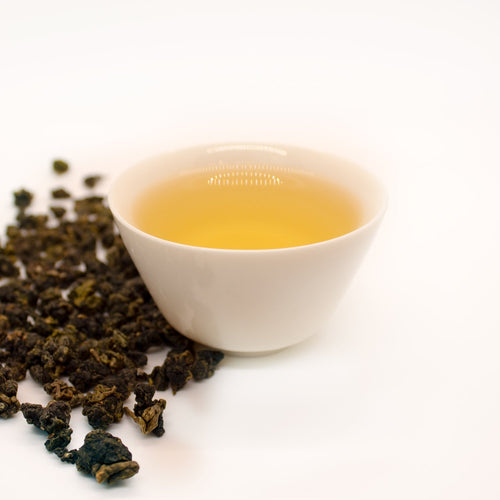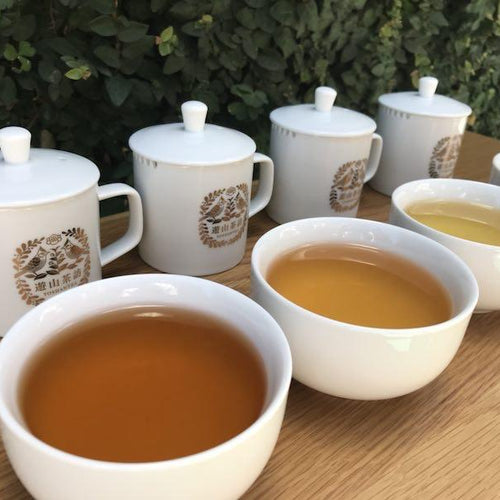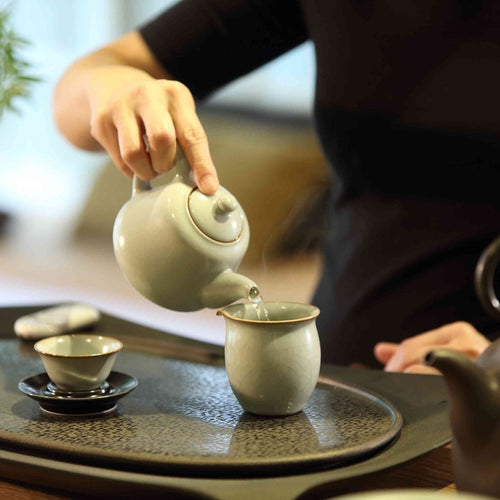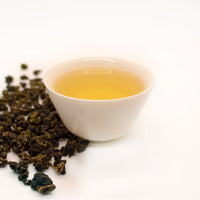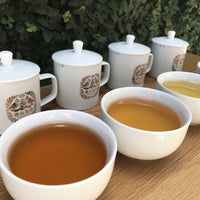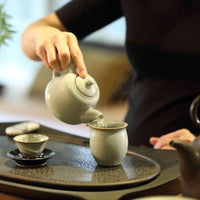
咖啡因真的讓人睡不著嗎?烏龍茶、紅茶、綠茶裡面的咖啡因含量很高嗎?
咖啡因會因為個人體質差異而有不同的敏感程度,茶會造成失眠是綜合原因,如:
●兒茶素與咖啡因共同影響胃部新陳代謝,使人感覺不舒服。
●咖啡因加速新陳代謝,使人血糖降低,使人感覺肚子餓。
以上都會產生失眠的結果,但比較特殊的是,有些人喝茶睡不著,喝咖啡卻沒事。
咖啡因是什麼?烏龍茶咖啡因比咖啡高?
咖啡因主要存在茶、咖啡與巧克力當中,是一種生物鹼,大部分是氨基酸的衍生物。
而咖啡因所表現的滋味,就是茶中的苦澀感,與咖啡因結構差不多的物質包含茶鹼與可可鹼。
然而咖啡因在茶葉中含量為2~4%,在咖啡豆中含量為1~2%。既然咖啡因在茶葉中的比例比咖啡高,為什麼不命名為’茶因’而是’咖啡因’呢?這是因為此化學物質在咖啡豆(1821)中被發現得時間比茶葉(1827)早,所以以咖啡因爲命名。
咖啡因對動物與植物的用途
當人類服下咖啡因時,是一種中樞神經興奮劑,會令人精神亢奮,神清氣爽。
咖啡因存在植物當中,是一種殺蟲劑,當昆蟲服用過多咖啡因時,會因麻痺而死亡。
正因為如此,咖啡因普遍以較高含量存在嫩芽當中,以達保護幼芽的功效。
所以當茶葉採摘較嫩時,其咖啡因含量會比較高,沖泡後喝起來比較苦澀,相較於採摘比較成熟或是較老的茶葉。
咖啡因跟茶鹼是什麼關係?
茶鹼是咖啡因的衍生物,除了咖啡因在人體肝臟代謝產生之外,也存在茶中,含量為0.002%,作用與咖啡因類似。仿間常說,茶泡太久茶鹼會溶出太多,聽起來很可怕,事實上是咖啡因溶出太多。
為了避免嫩茶沖泡後苦澀,可以使用以下解決方法:
●縮短沖泡時間
●置茶量少一點
●低溫水沖泡或冷泡,如玉露60度、綠茶85度。(咖啡因在低溫水溶解度較低)
烏龍茶含咖啡因?3大咖啡因影響因素
影響茶中咖啡因含量包含以下3種:
- 茶葉老嫩度:越嫩咖啡因越高。
- 加工製造過程:包含綠茶、烏龍茶、紅茶,因不同發酵(氧化)程度所製造而成的茶類。烘焙過程會造成咖啡因含量降低,高溫會造成咖啡因從茶葉中昇華出來而使含量降低,因次烘焙程度高,咖啡因含量相對低。
- 茶樹品種:在茶的家族當中,分成 C. Sinensis. (小葉種) 與 C. Assamica. (大葉種)小葉種通常咖啡因含量較低(2~3%),大葉種則較高(>4%)。
烏龍茶咖啡因低嗎?N種茶葉咖啡因濃度比較
以下為不同茶種的咖啡因濃度比較表,5分為最多咖啡因,1分為最少咖啡因。
| 綠茶 | 清香型烏龍茶 清茶 |
濃香型烏龍茶 烘焙烏龍茶 日本焙茶 |
紅茶 | |
|---|---|---|---|---|
| 大葉種 | 5 | 5 | 3-4 | 5 |
| 小葉種 | 2 | 2 | 1-2 | 2 |
茶葉咖啡因常見問題
1. 如果茶沒有咖啡因會比較好嗎?
茶與咖啡因有如酒與酒精,如茶無咖啡因,喝起來欠缺茶滋味。
2. 咖啡因喝多了會有什麼副作用?
喝咖啡會引起胃酸逆流,喝茶偶爾也會,這其是因為咖啡因會使胃酸分泌,引起不適感。那該怎麼解決?可以挑選較低咖啡因含量的茶。如:
● 烘焙過的茶。
● 葉子成熟度足夠的茶。
● 小葉種茶。
● 吃飽再喝茶。
3. 茶與咖啡哪個咖啡因比較高,孕婦可以喝茶嗎?
一杯240ml咖啡中咖啡因含量約在130-140mg,一杯240ml茶約15-50mg。
根據婦產科醫學會建議,懷孕期間每日咖啡因攝取量應小於 200~300 毫克。
為每日可以攝取4~15杯茶,咖啡因含量根據茶的品種與製作方法而定。
咖啡因術語與趣事:
‘起狗毛’是在焙茶時常聽到的術語,是指長時間或是高溫烘焙下咖啡因在茶葉表面所形成結晶。這些結晶也會附著在機器表面與天花板,看起來就像積雪。
雖然烘焙會造成咖啡因降低,但是曾有研究發現,在某種烘焙條件下,咖啡因含量會增加,這是因為茶中有某部分咖啡因會與茶多酚形成『咖啡因-茶多酚』化合物,經過烘焙而分解,造成咖啡因含量增加。

Can not sleep very well? This article takes you to fully understand the caffeine in tea

Does caffeine really make you sleepless? How much caffeine content in oolong tea, black tea, and green tea?
Because of differences personal physique, they have different sensitivity to caffeine
Tea can cause insomnia, such as:
- Catechin and caffeine affect the metabolism of the stomach together, making people feel
uncomfortable.
- Caffeine accelerates metabolism, lowers blood sugar, and makes people feel hungry.
All of the above will cause insomnia, but what's more special is that some people can't sleep with
tea, but they're fine with coffee.
What is caffeine? Oolong tea has higher caffeine than coffee?
Caffeine is an alkaloid mainly found in tea, coffee and chocolate, most of which are derivatives of amino acids.
The taste of caffeine is the bitterness in tea. Substances similar in structure to caffeine include theophylline and theobromine.
However, the content of caffeine in tea is 2~4%, and the content in coffee beans is 1~2%. Since the proportion of caffeine in tea is higher than coffee, why not name it "theaine" but "caffeine"?
This is because this chemical was found in coffee beans (1821) earlier than tea (1827), so it was named after coffee.
Caffeine for animals and plants
When humans take caffeine, it is a central nervous stimulant, which makes people excited and refreshed.
Caffeine is an insecticide. When insects take too much caffeine, they will die from paralysis.
Because of this, caffeine is generally present in the young buds at a higher content to achieve the effect of protecting the young buds.
Therefore, when the tea is picked tender, its caffeine content will be higher, and it will taste more bitter after brewing, compared to the more mature or older tea picked.
What is the caffeine and theophylline?
Theophylline is a derivative of caffeine with a content of 0.002%, which is similar to caffeine. It is often said that theophylline will dissolve too much if the tea is brewed for too long. It sounds terrible, but in fact it is because the caffeine dissolves too much.
In order to avoid the bitterness of the tender tea after brewing, can used the following solutions:
- Shorten the brewing time
- Put a little less tea
- Brew in low-temperature water or cold brew, such as Yulu 60 degrees, green tea 85 degrees. (Caffeine has low solubility at low temperatures)
Does oolong tea contain caffeine?
Affect the caffeine content in tea including the following 3 kinds:
- Tenderness of tea leaves: the more tender, the higher the caffeine.
- Production process: including green tea, oolong tea, black tea, and teas produced due to different fermentation (oxidation). The roasting process will reduce the caffeine content, and the high temperature will cause the caffeine to sublime from the tea and reduce the content. Due to the high degree of roasting, the caffeine content is low.
- Tea Variety: In the tea family, they are divided into C. Sinensis. (small-leaf) and C. Assamica. (large-leaf). Small-leaf usually have low caffeine content (2~3%), and large-leaf have a higher caffeine content ( >4%).
Is oolong tea low in caffeine? Comparison of Caffeine Concentrations of 4 Types of Tea
The following is a comparison table of the caffeine concentration of different tea types, 5 is the most caffeine, and 1 is the least caffeine.
| Green tea | Fresh Oolong tea | Roased Oolong tea | Black tea | |
|---|---|---|---|---|
| Large-leaf | 5 | 5 | 3-4 | 5 |
| Small-leaf | 2 | 2 | 1-2 | 2 |
Tea Caffeine Questions
- Would it be better if the tea had no caffeine?
Tea and caffeine are like wine and alcohol, like tea without caffeine, it lacks the taste of tea.
- What is the effect of drinking too much caffeine?
Drinking coffee can cause acid reflux, and sometimes tea can also. This is because caffeine can secrete gastric acid and cause discomfort. How can it be solved? You can choose a tea with a lower caffeine content. like:
- Roasted tea.
- Tea with enough mature leaves.
- Small leaf tea.
- Drink tea after eating.
- Tea or coffee Which caffeine is higher. Can pregnant women drink tea?
The caffeine content in a cup of 240ml coffee is about 130-140mg, and a cup of 240ml tea is about 15-50mg.
According to the recommendations of the Society of Obstetrics and Gynecology, the daily caffeine intake during pregnancy should be less than 200-300 mg.
In order to consume 4-15 cups of tea a day, the caffeine content depends on the type of tea and the production method.
Caffeine terms and interesting facts:
"Kaigumao" is a term often heard in roasted tea, which refers to the crystallization of caffeine formed on the surface of tea leaves under long-term or high-temperature roasting. These crystals will also adhere to the surface and ceiling of the machine, which looks like snow.
Although roasting will reduce the caffeine, some studies have found that under certain roasting conditions, the caffeine content will increase. This is because a certain part of the caffeine in tea will form "caffeine-tea polyphenols" with tea polyphenols. The compound is broken down after roasting, resulting in an increase in caffeine content.



